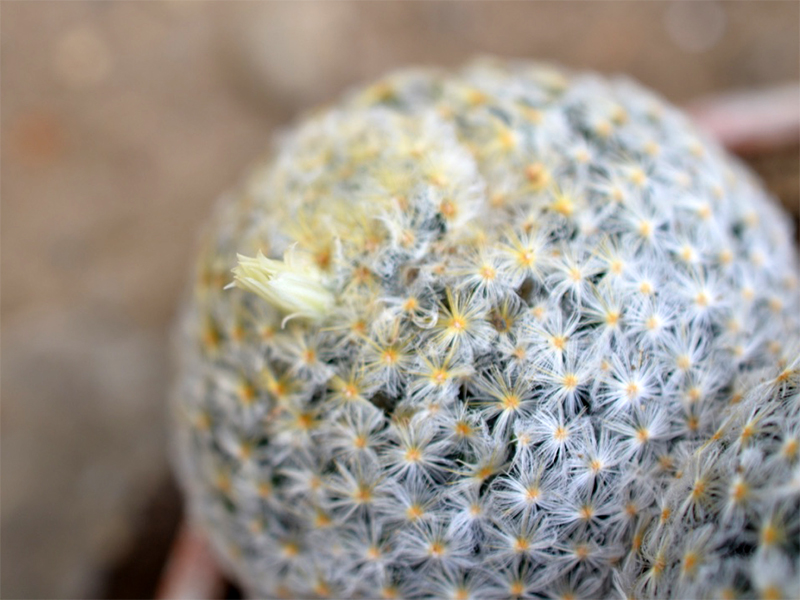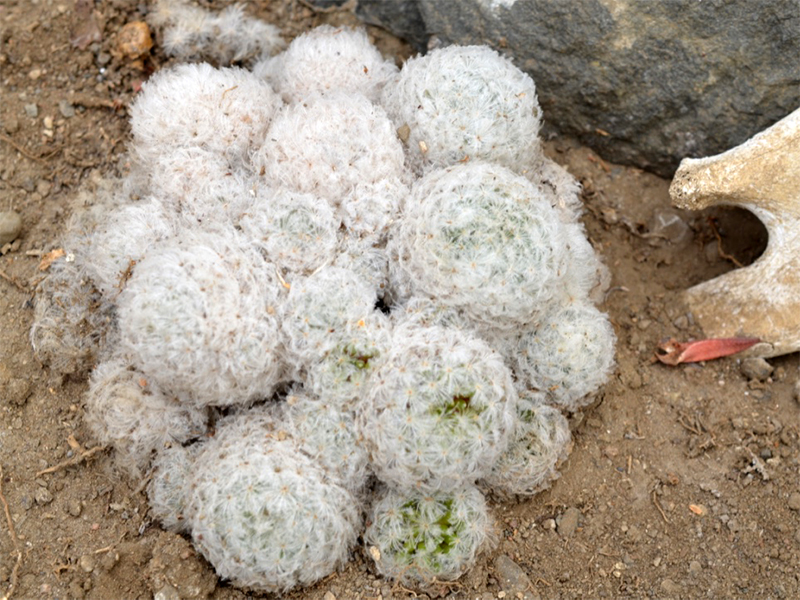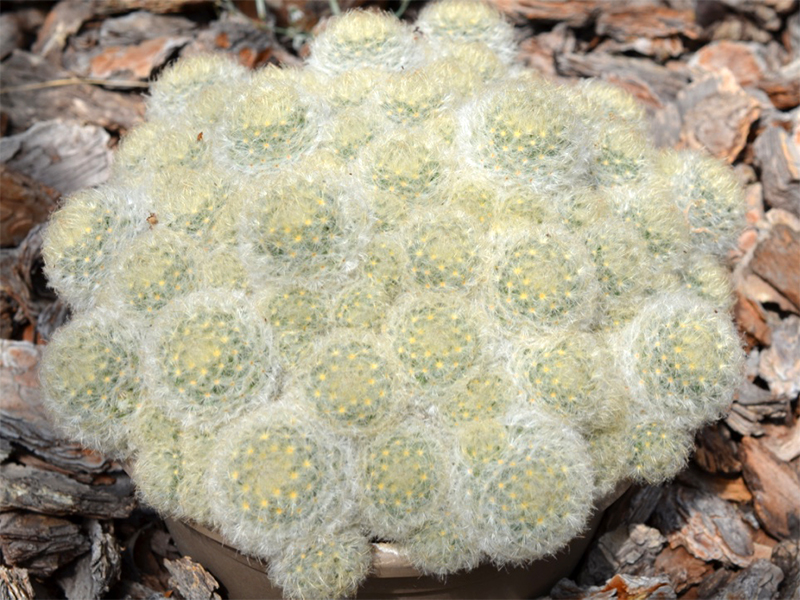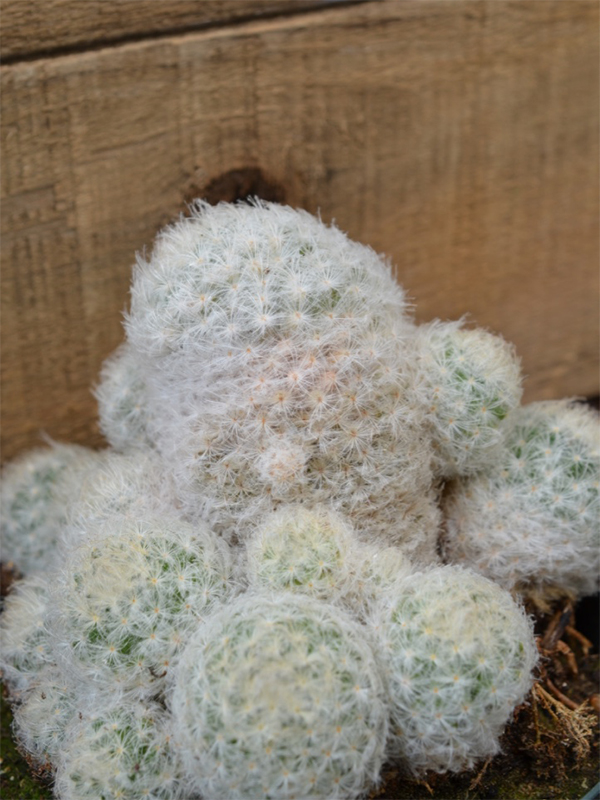
Perennials, Tropicals > Mammillaria > Mammillaria plumosa > Mammillaria plumosa
Mammillaria plumosa
Feather Cactus
Origin: Native to north eastern Mexico in Coahuila, Nuevo Leon, Monterry and Saltillo. The genus name Mammillaria comes from the word 'mammilla', Latin for little teat or nipple, referring to the plant's rounded projections.
| Family |
| Cactaceae |
| Genus |
| Mammillaria |
| Species |
| plumosa |
| Category |
| Perennials, Tropicals |
| Synonyms |
| Chilita plumosa, Neomammillaria plumosa, Mammillaria schiedeana plumosa, Mammillaria lasicantha plumosa |
| USDA Hardiness Zone |
| 10b |
| Canadian Hardiness Zone |
| Requires cool season protection under glass. |
| RHS Hardiness Zone |
| H2 |
| Temperature (°C) |
| 2 - 4 |
| Temperature (°F) |
| 35 - 40 |
| Height |
| 7 - 10 cm |
| Spread |
| 0.1 - 0.5 m |
Photographs
Description and Growing Information
Flowering Period
| General Description |
| Mammillaria plumosa is a cactus with light green globose stems covered with hairy white spines, forming a low, dense, cushion-like mound. Often in clusters. |
| Landscape |
| Rock gardens, arid gardens, as a potted patio or indoor plant, in cactus collections or as a specimen. |
| Cultivation |
| Grow in a sheltered location in full sun, moderately moist, well-draining loamy and sandy soil. Use a balanced liquid fertilizer every 2 - 3 weeks. |
| Growth |
| Slow |
| Pests |
| May be susceptible to mealybugs. |
| Leaf Description |
| Up to 40 white feathery spines (modified leaves) 3 - 7 mm long are radially distributed on globose stems, woolly axils. |
| Flower Description |
| Bell-shaped, Solitary, 15 - 12 mm, cream to pale pink petals with a darker pink, central vein, curving outwards, bright yellow stamens. The inner petals are pale greenish-white with brownish mid-lines. |
| Fruit Description |
| Pale pink to dull red, club-shaped, contain many brown to black seeds that are pitted. |
| Notable Specimens |
| The Devonian Botanic Garden, Devon, Alberta, Canada. Centennial Conservatory, Thunder Bay, Ontario, Canada. |
| Propagation |
| By seed sown in early spring at 19 - 24°C, however seed is seldom set. By offsets which do not root easily, using a coarse vermiculite and rooting hormone is recomended. |




